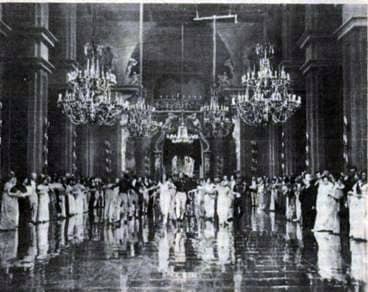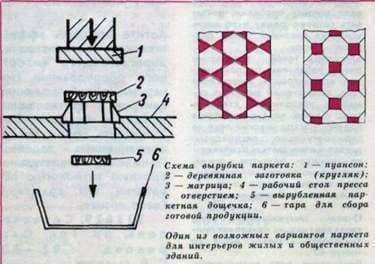
Waste logging is still used badly. High-quality products made from forgings, leftovers of crowns, etc., are obtained in the form of a figured end-face parquet. This is not news, we would like to share with the interested readers only the experience of the industrial organization of this matter and hope to help with our advice. So, in the beginning it is necessary to dry the wood up to 8-12% of humidity. Then, with a circular saw, cut the log into plates of the same thickness (1 to 3 cm) perpendicular to the fibers.

Now from the cut off plates you cut down the parquet of the desired configuration. To this end, hardened matrixes of tool steel are used, mounted on the working table of a hydraulic or eccentric press. The only thing that should be envisaged in the press itself is to cut the hole in the working table so that the parquets are cut out unhindered into the prepared container. On the moving part of the press a flat punch is fixed with a diameter greater than the size of the parquet to be cut. By adjusting the press, the punch at 1.5-2 mm does not reach the matrix in the lowest position. By choosing the configuration and size of the matrices, you can maximize the use of wood waste.
After cutting, the parquet is glued with anhydrous glue (not to crack) to any rigid substrate (multi-ply, particle board, etc.) and ground on a surface grinder. Then it is varnished.
For parquet produced by this method, wood of any kind is suitable. It is also used for floors with increased hardness, laid in industrial premises and livestock complexes, and for highly artistic parquets, for which it is scary to walk a simple person.
Паратиф у пчел. Зимовка на двух корпусах.
Useful tips for the amateur beekeeper